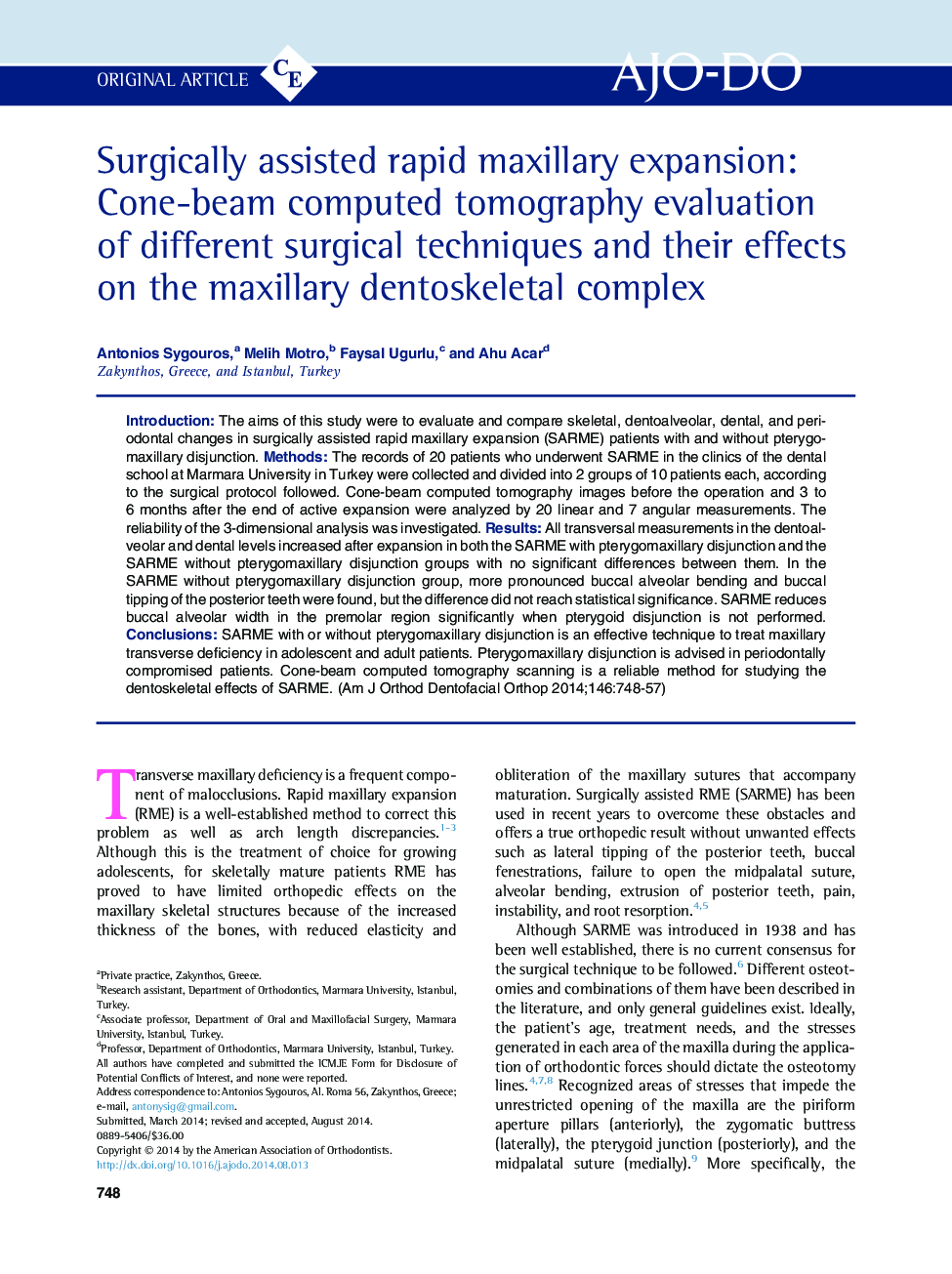| Article ID | Journal | Published Year | Pages | File Type |
|---|---|---|---|---|
| 3116111 | American Journal of Orthodontics and Dentofacial Orthopedics | 2014 | 10 Pages |
•Surgically assisted rapid maxillary expansion (SARME) can correct transverse discrepancies and maxillary transverse deficiencies.•Cone-beam computed tomography is reliable for assessing maxillary dentoskeletal changes after expansion.•SARME can cause buccal tipping of posterior teeth and buccal alveolar bending.•Separate the pterygoid plates to minimize buccal alveolar width reductions.
IntroductionThe aims of this study were to evaluate and compare skeletal, dentoalveolar, dental, and periodontal changes in surgically assisted rapid maxillary expansion (SARME) patients with and without pterygomaxillary disjunction.MethodsThe records of 20 patients who underwent SARME in the clinics of the dental school at Marmara University in Turkey were collected and divided into 2 groups of 10 patients each, according to the surgical protocol followed. Cone-beam computed tomography images before the operation and 3 to 6 months after the end of active expansion were analyzed by 20 linear and 7 angular measurements. The reliability of the 3-dimensional analysis was investigated.ResultsAll transversal measurements in the dentoalveolar and dental levels increased after expansion in both the SARME with pterygomaxillary disjunction and the SARME without pterygomaxillary disjunction groups with no significant differences between them. In the SARME without pterygomaxillary disjunction group, more pronounced buccal alveolar bending and buccal tipping of the posterior teeth were found, but the difference did not reach statistical significance. SARME reduces buccal alveolar width in the premolar region significantly when pterygoid disjunction is not performed.ConclusionsSARME with or without pterygomaxillary disjunction is an effective technique to treat maxillary transverse deficiency in adolescent and adult patients. Pterygomaxillary disjunction is advised in periodontally compromised patients. Cone-beam computed tomography scanning is a reliable method for studying the dentoskeletal effects of SARME.
